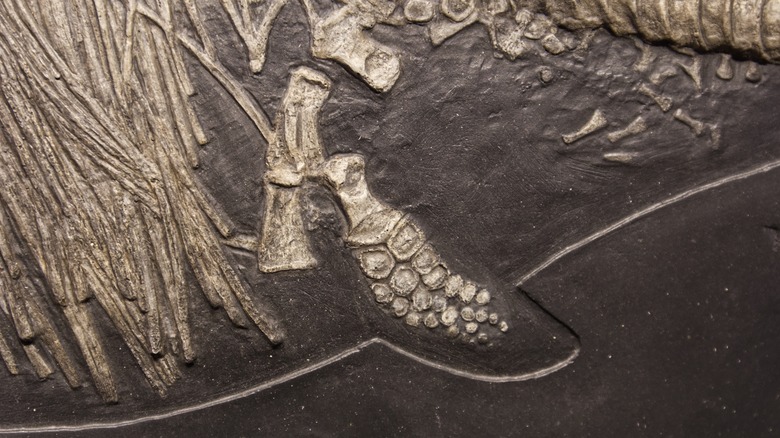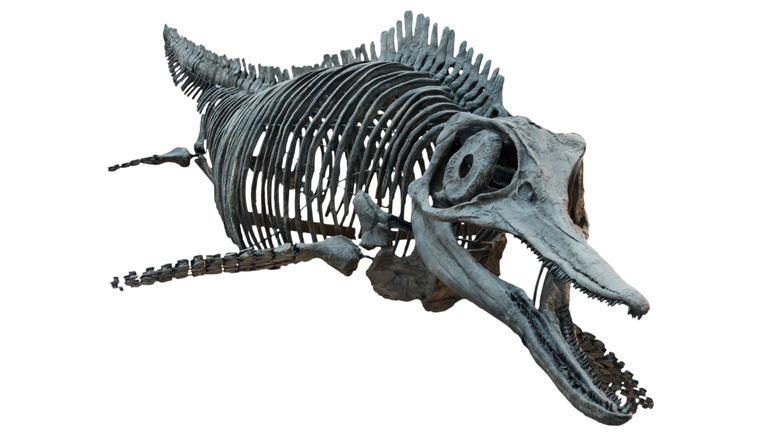Researchers May Have Just Identified The Largest Ancient Marine Reptile
When you think of the largest giant marine reptiles, you probably visualize the Mosasaurus, a massive, alligator-like creature that made a big splash (figuratively and literally) in "Jurassic World." That's fair, as it's a very large and very toothy aquatic creature, but was it actually the biggest? Researchers Martin Sander (University of Bonn, Nussallee), Pablo Romero Pérez de Villar (University of Bonn), Heinz Furrer (University of Zürich), and Tanja Wintrich (University of Bonn) don't think so, as fossil evidence recovered from the Swiss Alps suggests giant ichthyosaurs may have had it beaten by more than 10 feet.
The possible vertebrae, rib fragments, and a piece of a very large tooth suggest as much, according to a new study published in the "Journal of Vertebrate Paleontology." Granted there were comparably large oceanic animals in the distant past, such as the previously mentioned 56-foot Mosasaurus and the almost 60-foot Megalodon (the precursor to the Great White Shark, and also not a reptile), but the estimated 69-foot length of giant ichthyosaurs still exceeds them. The current reigning champion of seemingly impossibly large marine life that isn't specifically reptilian is the Blue Whale, however, which is still alive today and has been known to reach lengths close to 100 feet.
What the bones tell us
As is common with fossil records, the picture is incomplete. The details of how large giant ichthyosaurs can get, the areas of prehistoric Earth they used to inhabit, their behaviors, and so on are mostly inferred based on what's known (or at least broadly believed) of various time periods and environments. This is to say that what scientific evidence suggests, sometimes strongly, isn't as set in stone as the fossils themselves.
But what has been inferred from the remains recovered from the Upper Triassic Kössen Formation of the Swiss Alps is that ichthyosaurs may have gotten smaller as time went on, shifting from record-breaking lengths in the Triassic Period to the slightly smaller (but still more than 40 feet in length) and more commonly known dimensions from the Jurassic Period. Quite the difference roughly 57 million years can make.
It also, according to the research, suggests that toothed and toothless species of ichthyosaur may have coexisted at the same time throughout the Late Triassic. A similar level of diversity in types of toothed ichthyosaurs was also indicated by the differences in shape between these samples and previously recorded fossils of giant ichthyosaur teeth.

